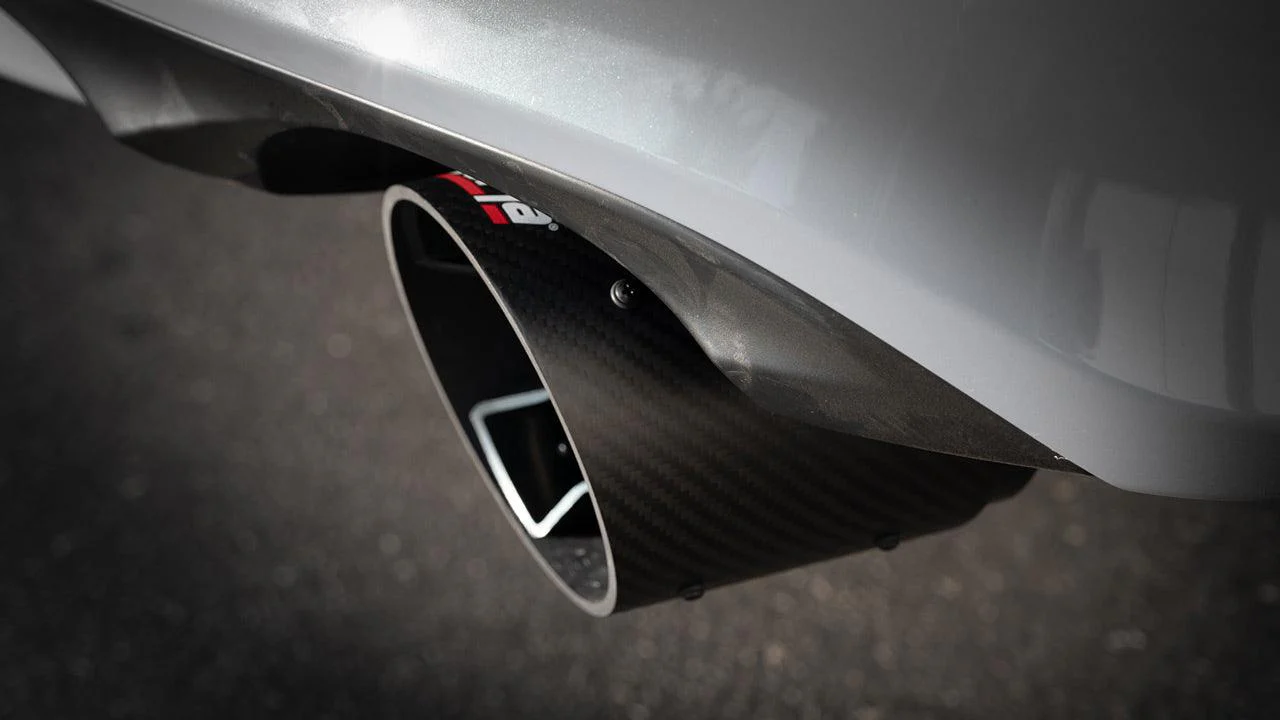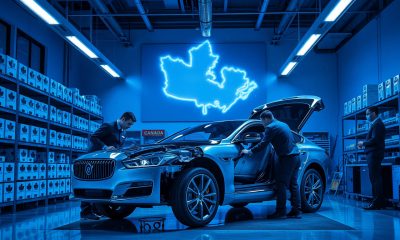Automotive
Exploring the World of Performance Car Brake Systems: Benefits of Performance Car Brakes
In the realm of high-performance driving, precision is paramount. Whether navigating twisty mountain roads or tearing up the racetrack, the ability to decelerate swiftly and confidently can make the difference between victory and defeat, safety and peril. Enter performance car brake systems – the unsung heroes of automotive excellence.
Having said that, let’s discuss the vital role of brake systems in performance driving, the limitations of stock-fitted brakes, and the transformative capabilities of performance brake systems. From superior stopping power to enhanced durability, these systems represent the epitome of precision engineering in the pursuit of automotive perfection.
The Importance of Brake Systems in Performance Driving
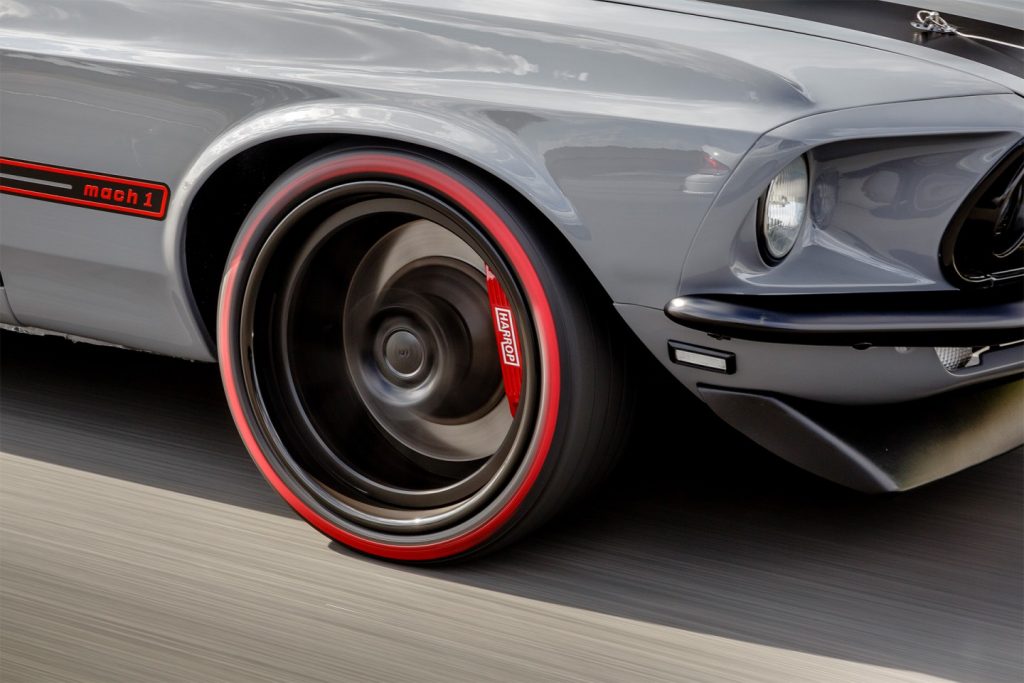
Critical Safety Component
Car brakes stand as one of the most critical safety components in any vehicle, particularly in performance driving scenarios. The ability to decelerate rapidly and predictably is essential for navigating corners, avoiding obstacles, and maintaining control in high-speed environments. In the absence of reliable brakes, the risks of accidents and collisions escalate significantly.
Optimized Performance
Beyond safety considerations, brake systems play a pivotal role in optimizing performance on the road and the track. By effectively converting kinetic energy into heat through friction, brakes enable drivers to modulate speed with precision, execute smooth cornering maneuvers, and extract maximum performance from their vehicles. In the hands of skilled drivers, high-performance brake systems become instruments of mastery, elevating driving experiences to new heights.
Endurance and Reliability
Performance driving places immense demands on brake systems, subjecting them to intense heat, friction, and mechanical stress. In endurance racing or track day events, where vehicles undergo prolonged periods of heavy braking, the durability and reliability of brake systems become even more crucial. A robust and resilient brake system ensures consistent performance under extreme conditions, instilling confidence in drivers and enhancing overall vehicle reliability.
Stock-Fitted Brake Systems: Limitations and Challenges
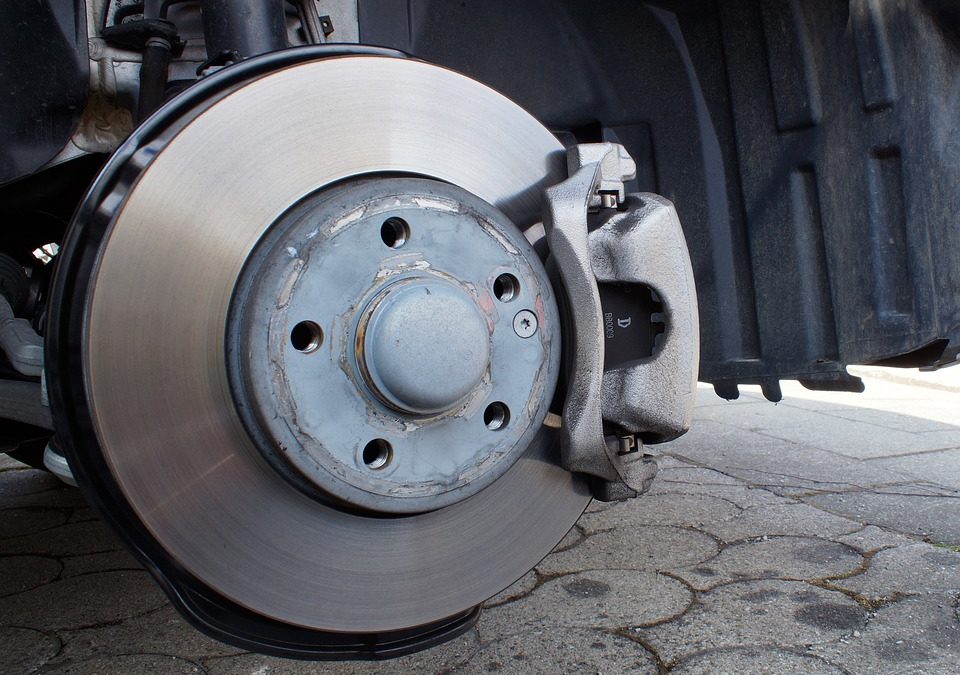
Designed for General Use
Stock-fitted brake systems, while adequate for everyday driving scenarios, are often not optimized for the rigorous demands of performance driving. Manufacturers prioritize factors such as cost-effectiveness, comfort, and noise reduction in designing stock brake systems, resulting in compromises in performance and durability, particularly on the track.
Susceptibility to Fade
One of the primary challenges of stock-fitted brake systems in performance driving is their susceptibility to brake fade. Brake fade occurs when prolonged or aggressive braking generates excessive heat, causing brake fluid to boil, brake pads to lose friction, and brake performance to deteriorate. This phenomenon compromises stopping power and increases stopping distances, posing significant safety risks.
Inadequate Cooling
Another limitation of stock brake systems is inadequate cooling capacity. High-performance driving generates substantial heat in the braking components, necessitating efficient cooling mechanisms to dissipate heat and maintain optimal operating temperatures. Stock brake systems often lack sufficient cooling provisions, leading to accelerated brake pad and rotor wear, reduced braking efficiency, and increased risk of brake fade.
Limited Performance Tuning
Stock brake systems offer limited opportunities for performance tuning and customization. While aftermarket brake pads and rotors may provide incremental improvements, the fundamental design constraints of stock systems restrict the extent to which performance can be enhanced. For drivers seeking to push the limits of their vehicles on the track, the inadequacies of stock-fitted brakes become apparent, necessitating the adoption of performance-oriented solutions.
Differences Between Traditional and Performance Brake Systems
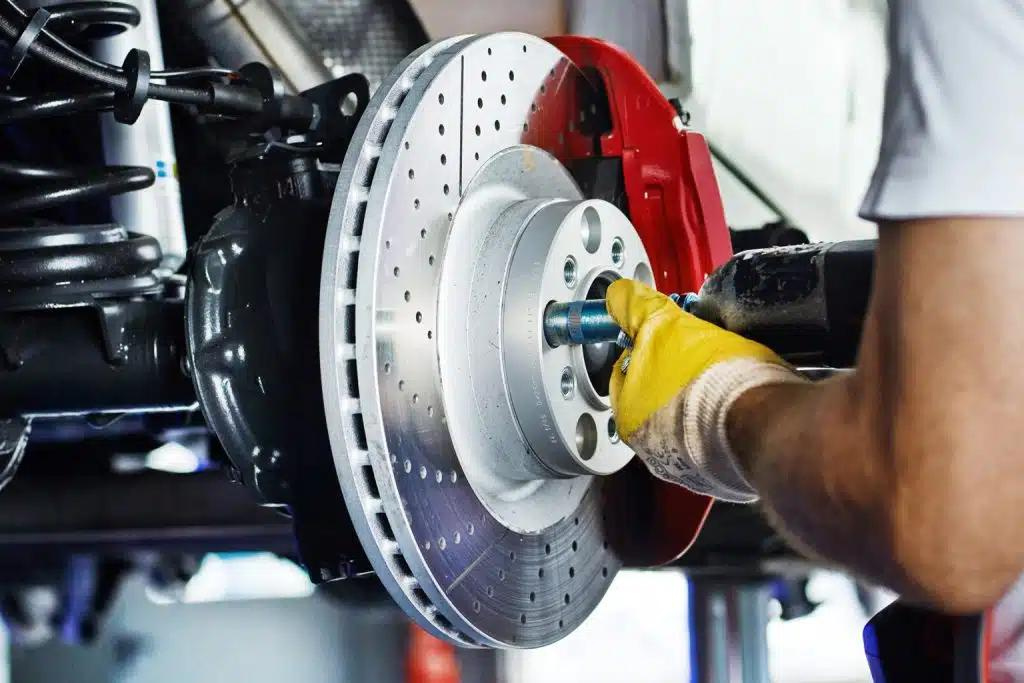
Enhanced Materials and Construction
Performance brake systems feature advanced materials and construction techniques designed to withstand the rigors of high-performance driving. High-carbon or ceramic composite rotors offer superior heat dissipation and durability compared to conventional cast iron rotors. Performance brake pads incorporate high-friction compounds and advanced bonding technologies for enhanced bite and fade resistance.
Upgraded Calipers and Pistons
Performance brake systems often include upgraded calipers and pistons engineered for improved brake modulation, responsiveness, and heat management. Multi-piston calipers, with their increased clamping force and surface area, distribute braking forces more evenly across the brake pads, minimizing uneven wear and reducing brake fade under extreme conditions.
Enhanced Cooling Features
Performance brake systems integrate advanced cooling features to combat heat buildup and mitigate brake fade. Vented rotors, cross-drilled or slotted designs, and directional airflow enhancements optimize heat dissipation and airflow, ensuring consistent braking performance even during extended track sessions. Additionally, performance brake ducts and cooling kits provide supplementary cooling to critical brake components, further enhancing reliability and endurance.
Improved Fluid Dynamics
Performance brake systems leverage optimized fluid dynamics to enhance brake feel, pedal modulation, and response. High-performance brake fluid with higher boiling points and improved lubrication properties ensures stable brake performance under extreme temperatures and pressures, reducing the risk of brake fade and improving pedal feedback for precise control.
Considerations When Choosing Performance Brake Systems
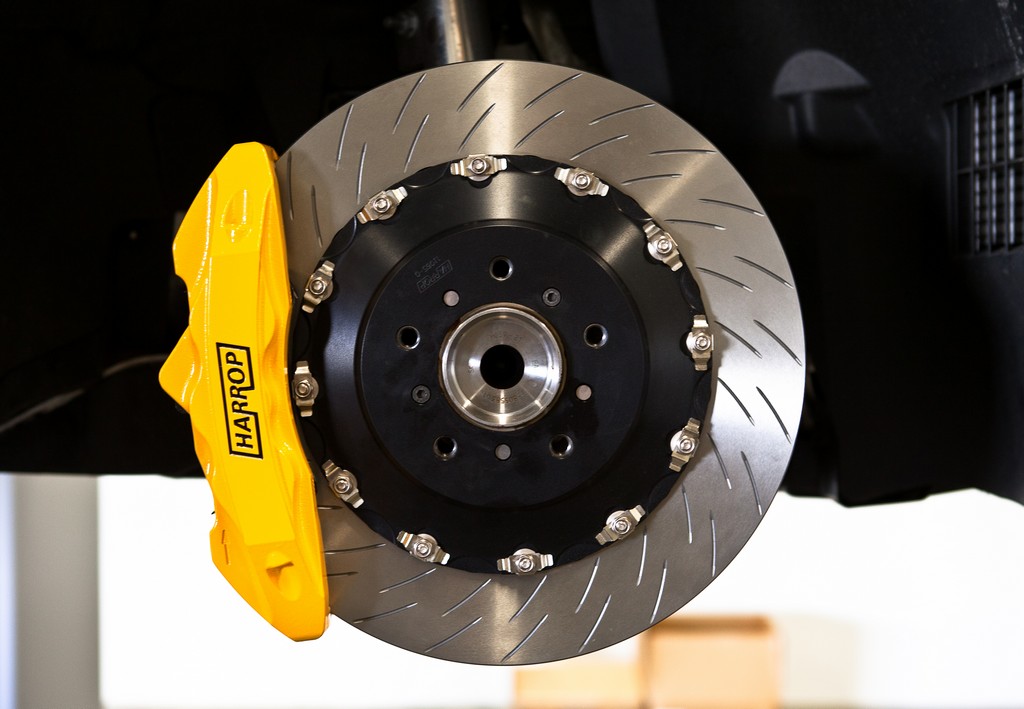
Application and Driving Style
Consider your intended application and driving style when selecting a performance brake system. Track-focused systems prioritize heat dissipation, fade resistance, and durability, making them ideal for aggressive driving and high-speed track events. Street-oriented systems offer a balance of performance and comfort for daily driving and occasional spirited outings.
Brake Pad Material
Choose brake pad materials based on your driving preferences and requirements. Semi-metallic pads offer high initial bite and temperature tolerance, making them suitable for aggressive driving. Ceramic pads provide quieter operation, low dust output, and consistent performance across a wide temperature range, ideal for daily driving and occasional track use.
Rotor Design and Material
Consider rotor design and material when selecting a performance brake system. Vented rotors with directional vanes enhance cooling efficiency and reduce the risk of brake fade. Cross-drilled or slotted rotors improve initial bite and wet weather performance, while reducing pad glazing and brake fade under heavy braking.
Caliper Configuration
Evaluate calliper configuration based on your vehicle’s requirements and performance goals. Fixed calipers with multiple pistons offer superior rigidity, clamping force, and heat dissipation compared to floating calipers. Consider upgrading to multi-piston calipers for improved brake modulation, pedal feel, and overall braking performance.
Installation and Maintenance
Ensure that the chosen performance brake system is compatible with your vehicle’s specifications and requires minimal modifications for installation. Factor in maintenance requirements, such as pad and rotor replacement intervals, brake fluid flushing, and caliper servicing, to ensure long-term reliability and performance.
Conclusion
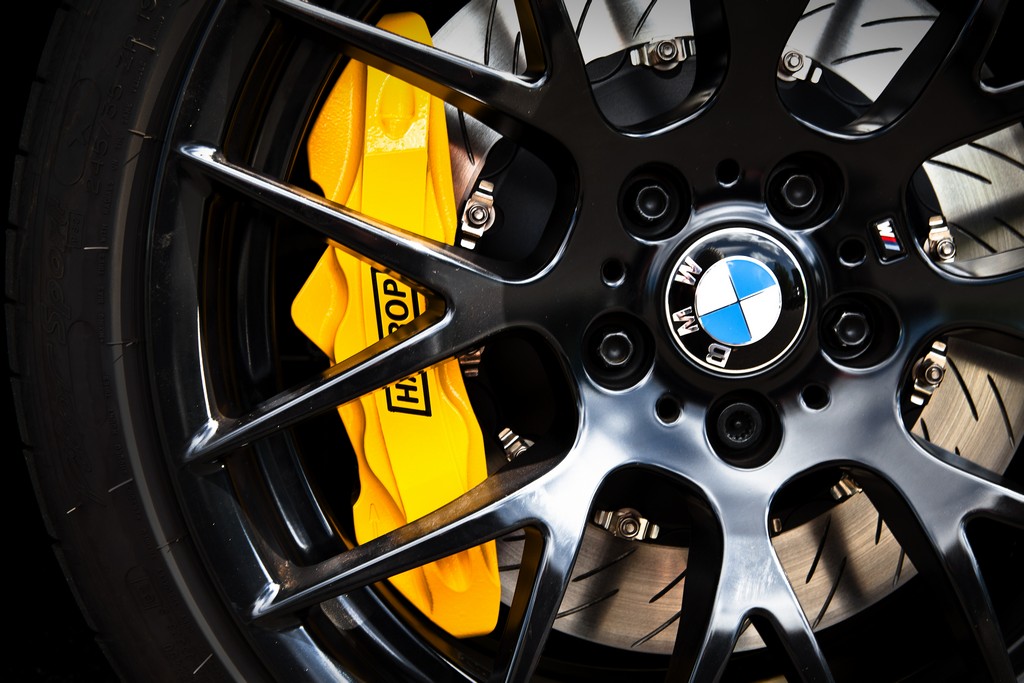
Performance car brake systems represent the pinnacle of automotive engineering, offering unparalleled stopping power, durability, and precision for enthusiasts and professional drivers alike. In the realm of high-performance driving, where split-second decisions and unwavering control are paramount, the importance of reliable and responsive brakes cannot be overstated. While stock-fitted brake systems may suffice for everyday driving, their limitations become apparent on the track, where the demands of performance driving push them to their limits.
With advancements in materials, design, and technology, performance brake systems offer a transformative solution for drivers seeking to elevate their driving experiences to new heights. From enhanced braking performance and fade resistance to improved durability and cooling efficiency, these systems embody the pursuit of automotive excellence and the relentless quest for perfection. By understanding the nuances of performance brake systems and making informed choices based on driving preferences and requirements, enthusiasts can unlock the full potential of their vehicles and embrace the thrill of high-performance driving with confidence and precision.
Writing for the blog since 2012, Chris simply loves the idea of providing people with useful info on business, technology, vehicles, industry, sports and travel – all subjects of his interest. Even though he sounds like quite the butch, he’d watch a chick flick occasionally if it makes the wife happy, and he’s a fan of skincare routines though you’d never have him admit that unless you compliment his impeccable skin complexion.

